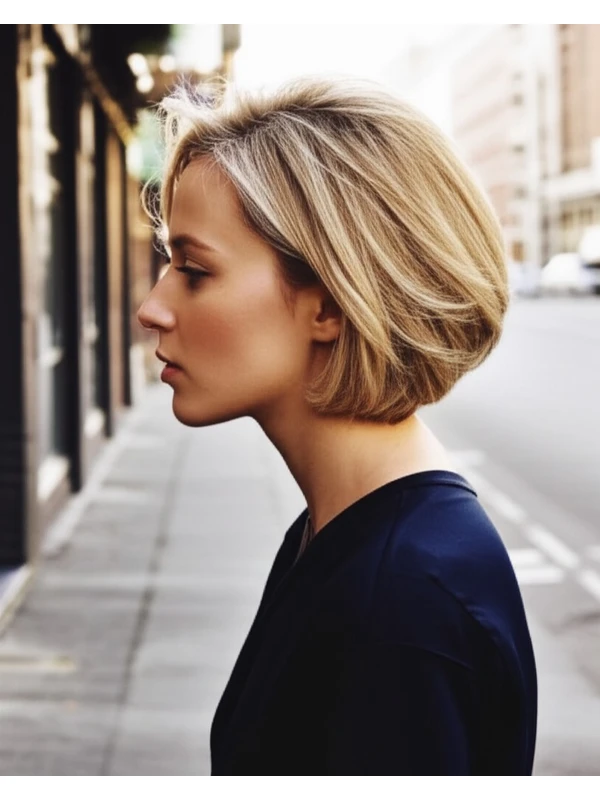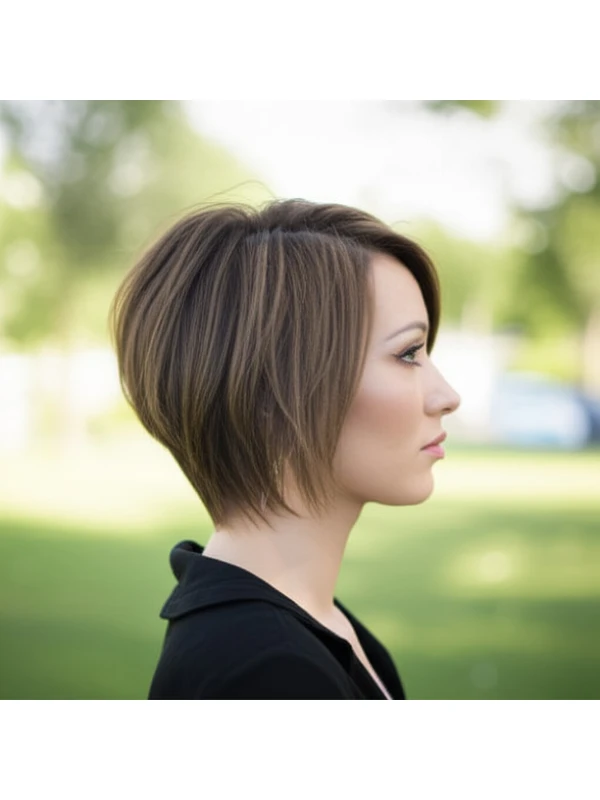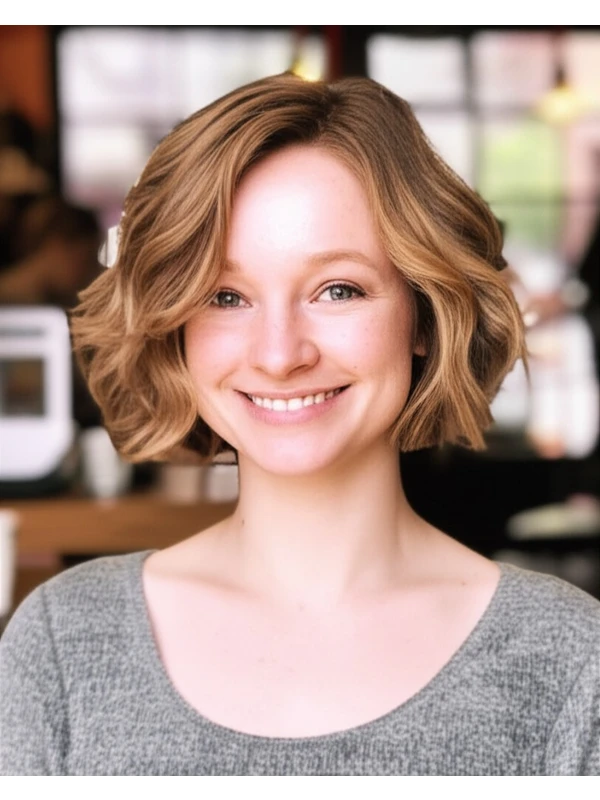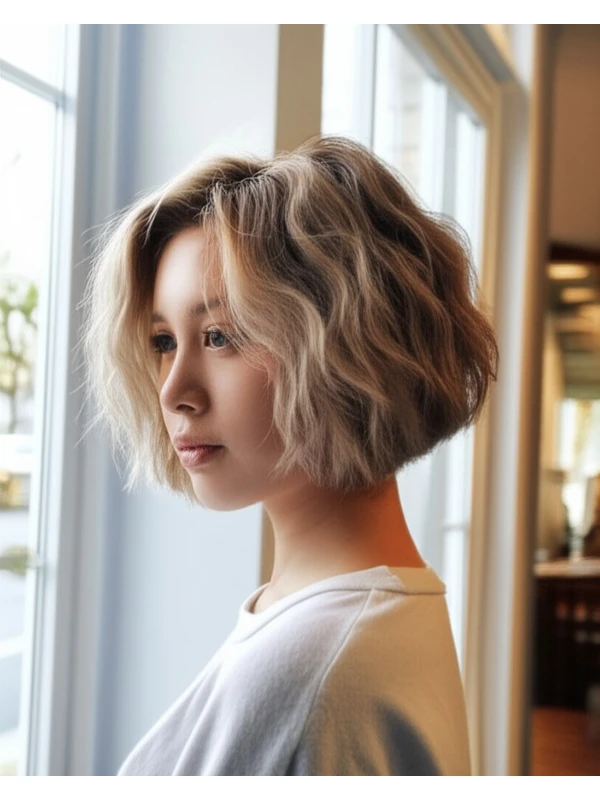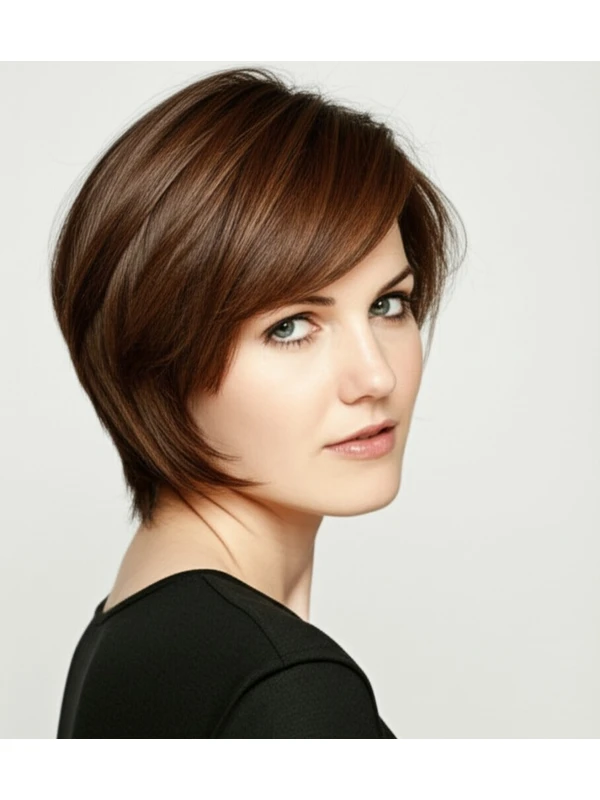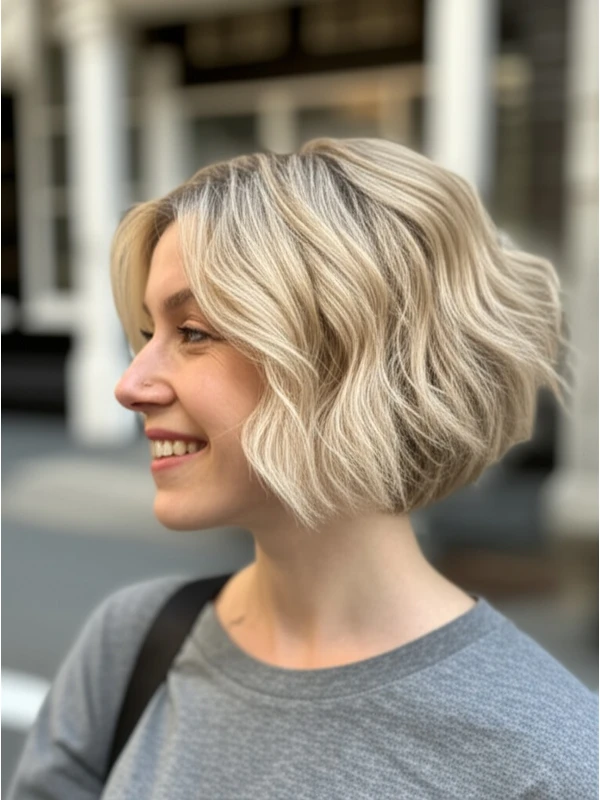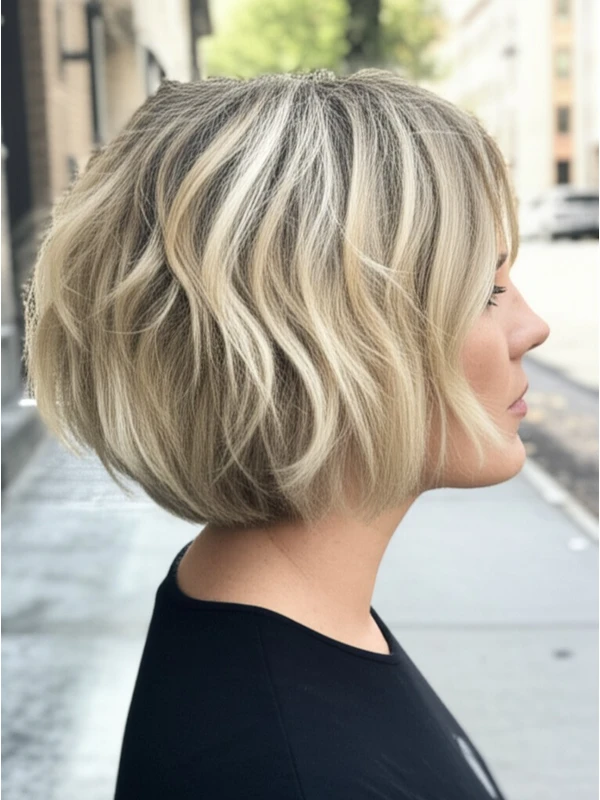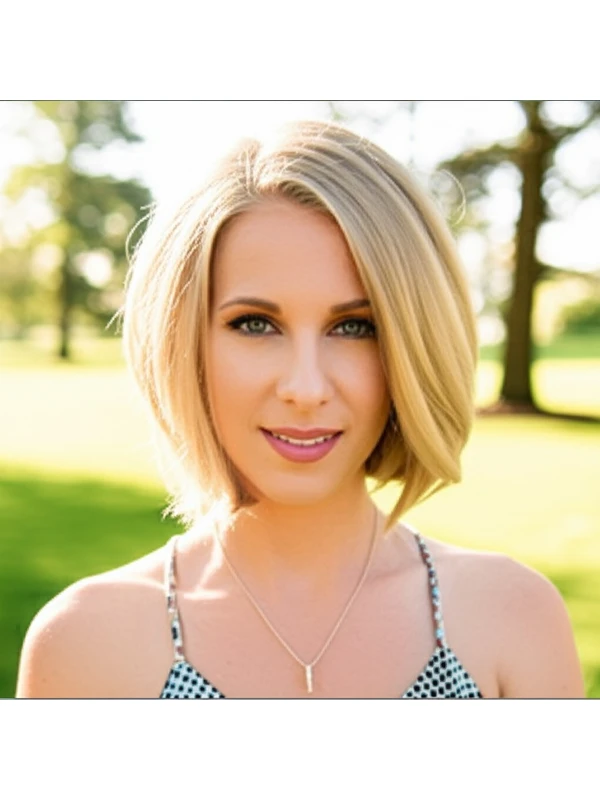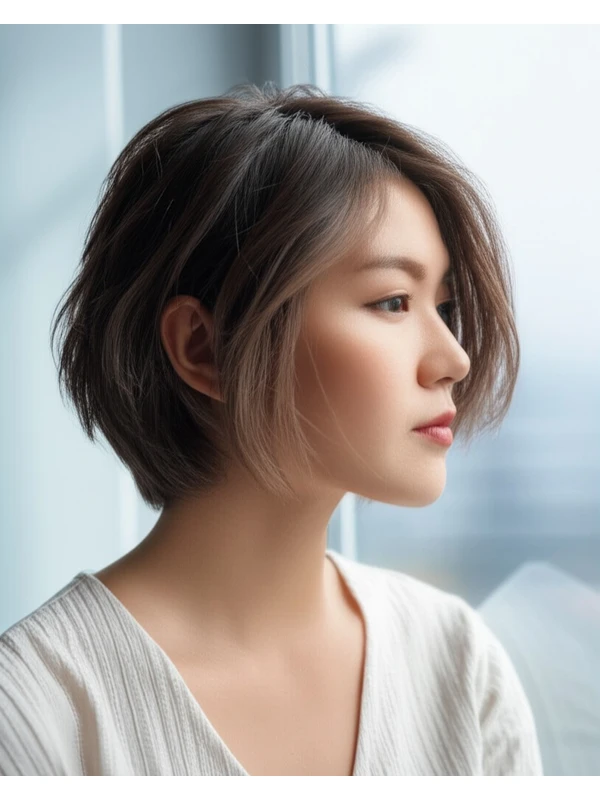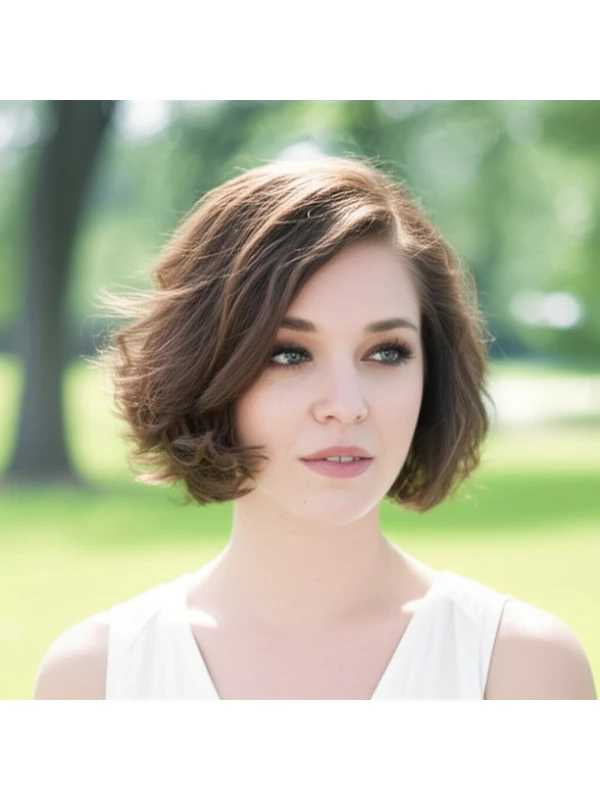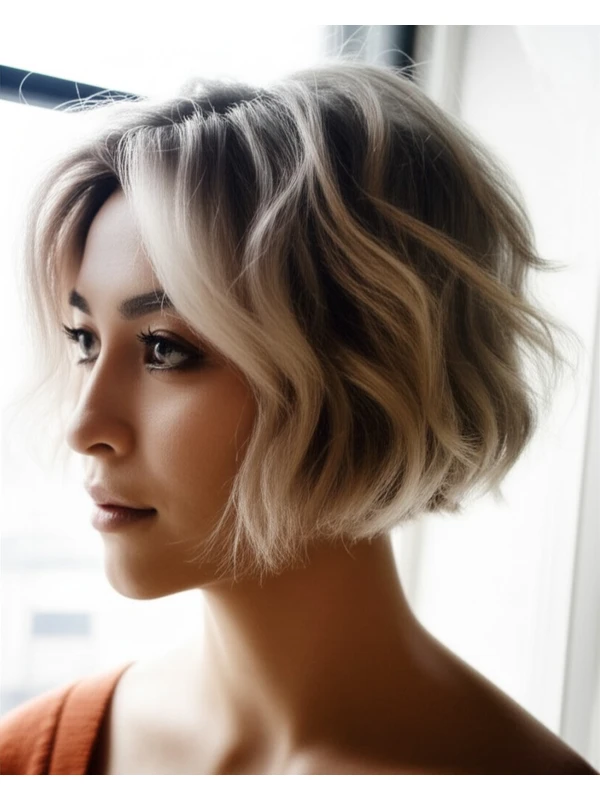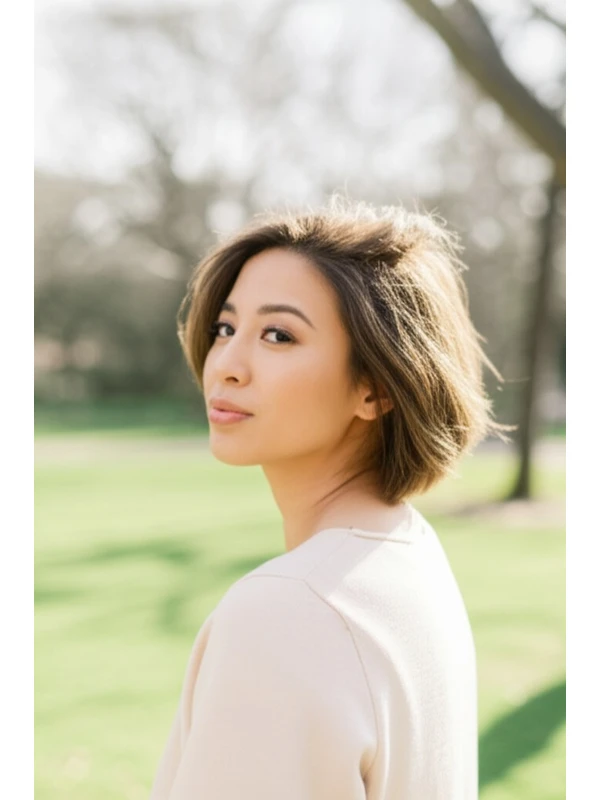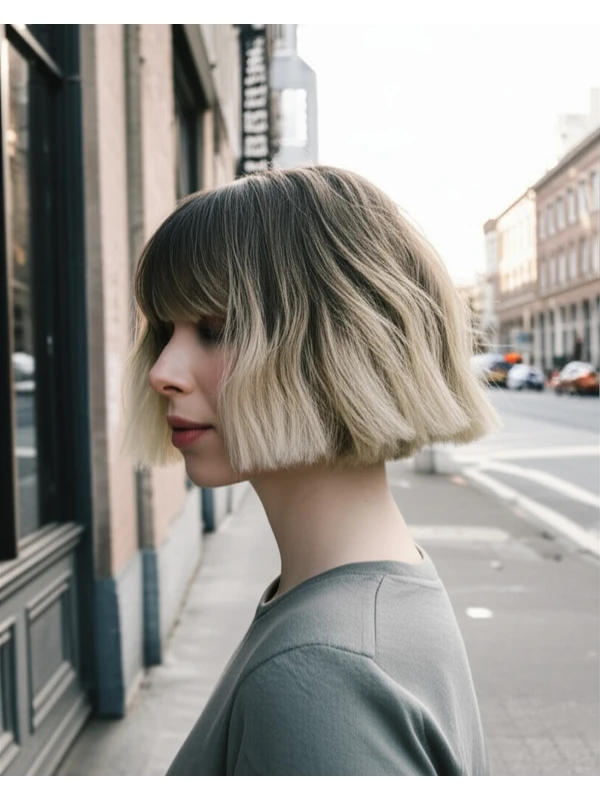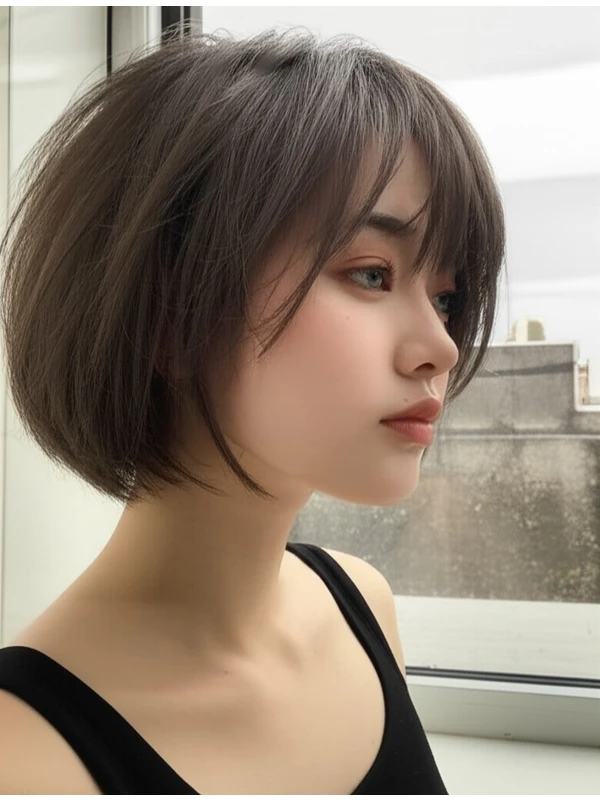#The Graduated Bob: A Modern Classic for Every You
The graduated bob – sometimes called an angled bob or a stacked bob – is a timeless hairstyle that's making a serious comeback. It’s more than just a short haircut; it’s about creating shape, movement, and personality. This guide will break down everything you need to know about this versatile style, from whether it suits your face shape to how to keep it looking its best.
#1) Background & Definition: What is a Graduated Bob?
A graduated bob isn't just one length all around. It’s characterized by layers that gradually increase in length towards the back of the head. Think of it as a bob haircut with built-in volume and lift at the crown, creating a subtly stacked effect.
- Cut Geometry: The front pieces are typically shorter than the back, which creates an angled look when viewed from the side. This angle can be subtle or dramatic depending on your preference.
- Key Features: Volume at the crown, layers for movement, and a generally shorter length (though variations exist).
- Typical Length Ranges: Generally sits between chin-length to just above the shoulders. Shorter versions are often referred to as "stacked bobs."
- Alternative Names: Angled bob, stacked bob, inverted bob (sometimes used but can imply more dramatic layering), A-line bob (if the angle is very pronounced).
#2) Face Shape Fit: Finding Your Perfect Angle
The graduated bob’s versatility shines in its ability to flatter a wide range of face shapes. However, small adjustments in length and fringe are key!
- Oval: Lucky you! An oval face suits almost any variation of the graduated bob. Play with angles – more dramatic for a modern edge, softer for classic appeal. A side-swept fringe adds softness.
- Round: The angle is your friend here! A longer graduated bob (hitting just above or at the shoulders) elongates the face. Avoid blunt bobs that can emphasize roundness. Side parts and angled fringes help slim the face.
- Square: Soften those angles with a graduated bob featuring soft layers around the jawline. A textured fringe, cut to blend softly into the cheekbones, is also very flattering. Avoid sharp, blunt lines.
- Heart: A chin-length or slightly longer graduated bob balances a wider forehead and pointed chin. Layers add fullness at the lower part of the face. Side-swept bangs are generally best; avoid center parts which can accentuate width.
- Diamond: A graduated bob with layers that start around the cheekbones softens diamond shapes, highlighting your eyes and cheekbones. A fringe (side or straight) can help balance a wider forehead.
- Oblong (Long): Shorter, more stacked versions of the graduated bob add width to an elongated face. Avoid styles that fall too long as they will only emphasize length. A full, blunt-ish fringe can also shorten the appearance of the face.
#3) Body Proportions & Height Guidance: Tailoring Your Bob
Beyond your face shape, your overall body proportions influence how a graduated bob looks and feels.
- Petite: A shorter, chin-length or slightly longer graduated bob adds visual height. Avoid overly long styles that can overwhelm a smaller frame.
- Average: Most lengths work well! Experiment with different angles to find what you love.
- Tall: Shoulder-length or slightly longer versions of the graduated bob balance out height and create a more proportional look.
- Narrow Shoulders: Volume at the crown helps broaden shoulders visually. A layered, textured cut adds fullness.
- Broad Shoulders: Avoid excessive volume on top; keep it balanced with layers that fall nicely around the shoulders.
- Short Neck: Shorter graduated bobs (chin-length or slightly above) can help elongate the neck. Avoid styles that are too voluminous at the back of the head.
- Long Neck: Longer, more flowing graduated bobs create a graceful look and minimize the appearance of a long neck.
#4) Works Best With Hair Types & Densities: Finding Your Match
The beauty of this cut is its adaptability! However, understanding your hair type is key to achieving the desired result.
- Straight: Graduated bobs add movement that straight hair often lacks. Layers create bounce and texture.
- Wavy: The layers enhance natural waves, creating a more defined shape. Consider air-drying for effortless style.
- Curly: A graduated bob is fantastic for curly hair! It removes weight and encourages curl definition.
- Shrinkage Note: Curly and coily hair will shrink significantly after drying. Discuss length with your stylist, accounting for this shrinkage (a chin-length cut might end up closer to the shoulders).
- Coily: Similar benefits as curly hair – reduced bulk, enhanced coil definition. A shorter graduated bob is often a great choice.
- Fine Hair: Layers add volume and prevent flatness. Opt for softer layers rather than heavy chopping.
- Medium Hair: The most versatile density! Most variations of the graduated bob will work well.
- Thick Hair: Graduated bobs remove weight, making hair feel lighter and more manageable. More layers are needed to reduce bulk effectively.
#5) Styling Variations: From Sleek to Textured
The graduated bob is a blank canvas for your styling creativity!
- Sleek vs. Textured: Sleek styles use smoothing products and heat tools for a polished look. Texturized styles embrace natural texture with air-drying or texturizing sprays.
- Middle vs. Side Part: A side part adds asymmetry and can soften features. A center part creates balance (especially flattering on oval faces).
- Fringe Variations: Blunt bangs, side-swept bangs, wispy bangs – all work well with a graduated bob!
- Occasion Styling:
- Casual: Air-dry with texturizing spray for effortless waves.
- Office: Sleek and straight with minimal flyaways.
- Evening: Add volume at the roots, use shine serum for a glamorous look.
#6) Maintenance: Keeping Your Bob Beautiful
Regular trims are essential to maintain shape and prevent your bob from losing its definition.
- Trim Cadence: Every 6-8 weeks is typical. Curly/coily hair may need more frequent trims (every 4-6 weeks).
- At-Home Routine: Gentle shampoo, hydrating conditioner, leave-in treatment for moisture.
- Heat vs Air-Dry: Minimize heat styling to protect hair health. Embrace air-drying whenever possible!
- Product Checklist:
- Shampoo & Conditioner (suited to your hair type)
- Leave-In Conditioner (especially important for dry or curly hair)
- Heat Protectant (if using hot tools)
- Texturizing Spray/Mousse (for added volume and texture)
- Finishing Serum/Oil (to smooth flyaways and add shine)
- Estimated Daily Styling Time: 5-15 minutes, depending on desired style.
#7) Grow-Out Roadmap: From Bob to Beyond
The graduated bob is designed for easy grow-out!
- Months 1-3: The shape remains distinct. Regular trims maintain the angle and layers.
- Months 3-6: Layers start blending together. A slight rebalancing trim will keep it looking intentional. You can experiment with adding more face-framing layers if desired.
- Maintaining Shape: Communicate your growth goals to your stylist at each appointment.
#8) Color Pairings: Enhancing the Cut’s Dimension
Color can dramatically enhance a graduated bob!
- Shades that Elevate: Dimensional highlights or lowlights add depth and movement, emphasizing the layers.
- Cool Undertones: Ashy blondes, cool browns, platinum shades.
- Warm Undertones: Honey blondes, caramel browns, copper tones.
- Low-Commitment Options: Balayage (hand-painted highlights) provides a soft, blended look that grows out gracefully.
#9) Season & Occasion Guide: Styling for Every Moment
Adjust your styling based on the season and occasion!
- Spring/Summer: Lighter layers, beachy waves, natural textures.
- Fall/Winter: More volume at the roots, sleek styles for a polished look.
- Work: Sleek and professional – minimal fuss.
- Weddings: Romantic waves or an updo that showcases the cut’s shape.
- Parties: Playful styling with texture and shine!
#10) Cost & Time: What to Expect at the Salon
The graduated bob is a relatively straightforward style, but salon prices vary.
- Salon Time: Typically 45-90 minutes for initial cut. Color services will add significant time.
- Estimated Price Range: Generally, expect a price range that's moderately higher than a simple trim, and lower than complex color treatments.
#11) Pros & Cons: Weighing the Options
Pros: Versatile, flattering for many face shapes, adds volume and movement, relatively easy to style (depending on desired look), grows out well. Cons: Requires regular trims, can be time-consuming to style if you want a very polished look, may not suit extremely fine hair without careful layering.
#12) Salon Consultation Script: Questions to Ask Your Stylist
Prepare for your appointment with these prompts:
- "I’m interested in a graduated bob. Can you show me some examples that would flatter my face shape?"
- “How much volume do you think I need at the crown?”
- "What length would be most flattering, considering my height and shoulder width?"
- “Can we discuss how to style this cut for both casual and more formal occasions?”
- "I have [hair type/density]. What layering techniques will work best for me?"
#FAQs: Your Graduated Bob Questions Answered
- Can I get a graduated bob with very thick hair? Absolutely! The layers will help remove weight and make your hair feel much more manageable.
- Is this style difficult to manage if I’m not good at styling my hair? It can be low-maintenance, especially if you embrace natural texture. A simple air-dry routine with a texturizing product is easy!
- Will the graduated bob make my face look wider? Not necessarily. Strategic layering and fringe placement can actually help to slim the face.
- How long does it take for a graduated bob to grow out if I change my mind? It will take several months, as hair grows about 1/2 inch per month. Trimming less frequently (while maintaining shape) can slow down the process slightly.
- Can I get bangs with a graduated bob? Yes! Side-swept, blunt, or wispy – all are great options.
- What if my hair doesn’t hold layers well? Communicate this to your stylist! They may recommend using styling products that provide extra grip and hold.
